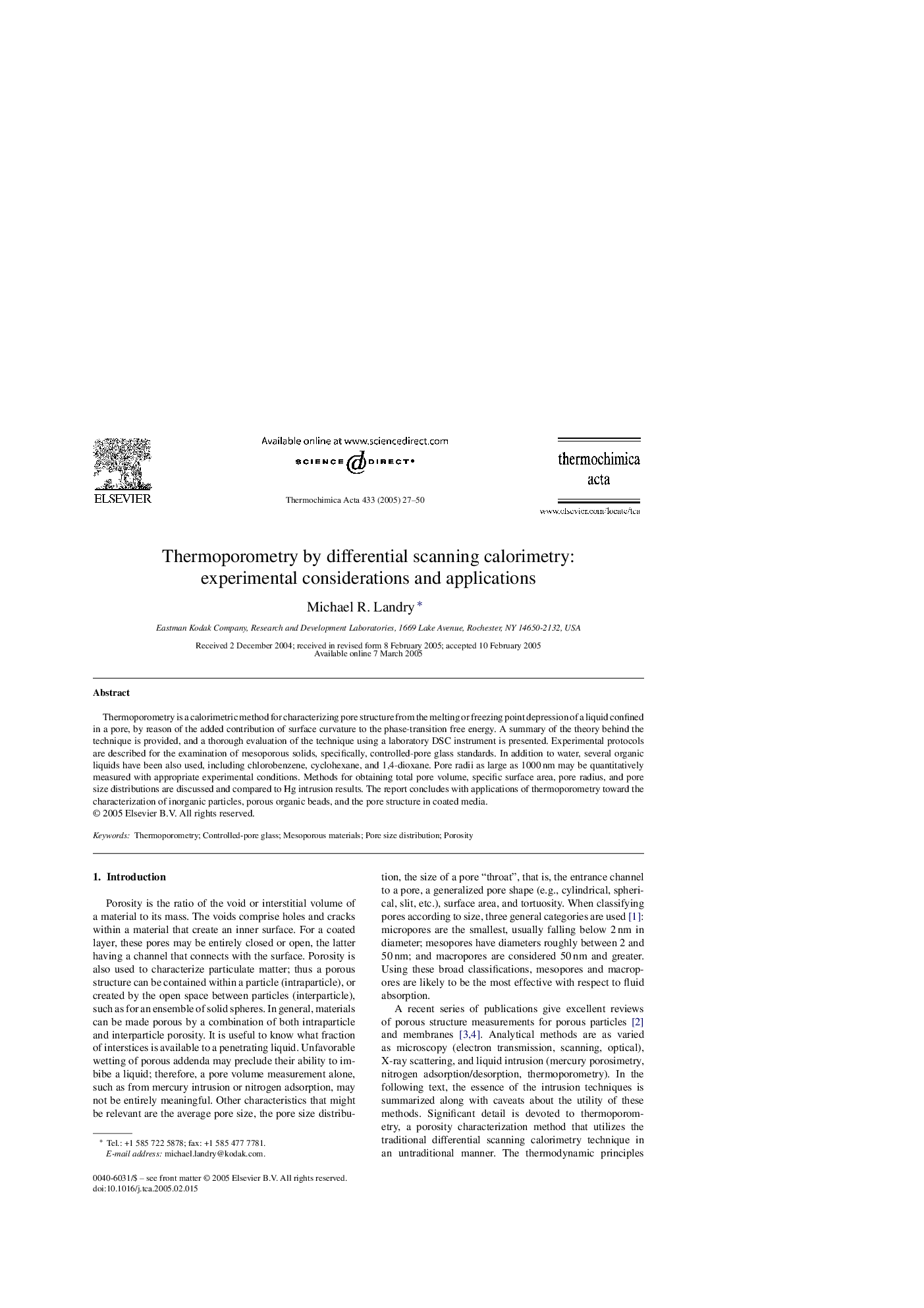| Article ID | Journal | Published Year | Pages | File Type |
|---|---|---|---|---|
| 9694047 | Thermochimica Acta | 2005 | 24 Pages |
Abstract
Thermoporometry is a calorimetric method for characterizing pore structure from the melting or freezing point depression of a liquid confined in a pore, by reason of the added contribution of surface curvature to the phase-transition free energy. A summary of the theory behind the technique is provided, and a thorough evaluation of the technique using a laboratory DSC instrument is presented. Experimental protocols are described for the examination of mesoporous solids, specifically, controlled-pore glass standards. In addition to water, several organic liquids have been also used, including chlorobenzene, cyclohexane, and 1,4-dioxane. Pore radii as large as 1000Â nm may be quantitatively measured with appropriate experimental conditions. Methods for obtaining total pore volume, specific surface area, pore radius, and pore size distributions are discussed and compared to Hg intrusion results. The report concludes with applications of thermoporometry toward the characterization of inorganic particles, porous organic beads, and the pore structure in coated media.
Related Topics
Physical Sciences and Engineering
Chemical Engineering
Fluid Flow and Transfer Processes
Authors
Michael R. Landry,
